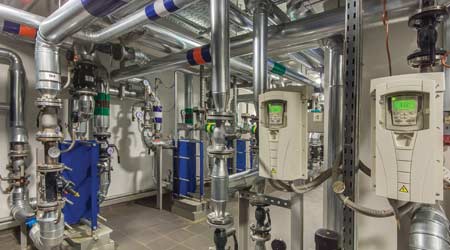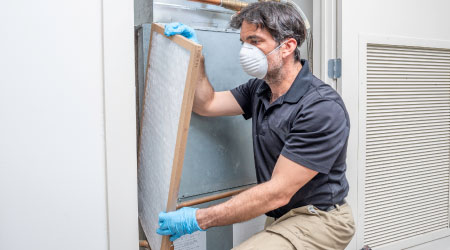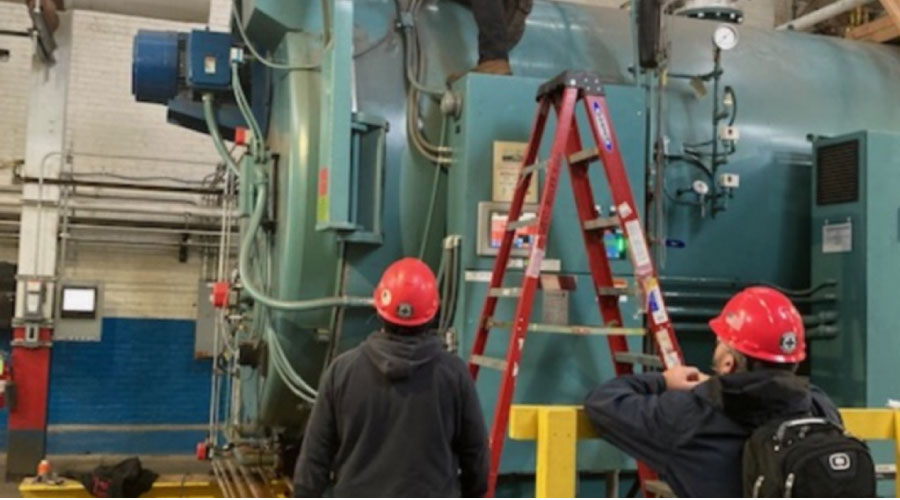 Mechanical systems account for about 25 percent of total water use when they operate properly, but equipment failures and improper setup can increase this number dramatically.
Mechanical systems account for about 25 percent of total water use when they operate properly, but equipment failures and improper setup can increase this number dramatically.Water Watch on Plumbing Systems
Water audits, leak-detection technology and updated fixtures can help managers curtail facility water use
Domestic water use accounts for about 40 percent of the water use in most buildings. Toilets, urinals and lavatory sinks account for most domestic water use. Water closets and urinals bought after 1992 typically have measured their flow rates of 1.6 gallons per flush (gpf).
For units with no flow-rate indicator, managers can assume they are pre-1992 models and have a flow rate of 3.5 gpf. The same goes for urinals. Technicians should record the number of each type of fixture and its flow rate for all lavatories in a facility.
For lavatory sinks, technicians measure the flow rate using a stopwatch and a container of a known volume and record the flow rate for each lavatory sink in the facility. Older units should have a flow rate of 2.5 gallons per minute (gpm) or higher, while newer ones should be in the range of 1.5 gpm or less.
The hardest part of quantifying domestic water use is estimating the number of people who use a restroom daily. Technicians can make estimates by using a counter on the door to register the number of times each day a user opens the door or by counting the number of people who enter the restroom over a period of time. Managers can use a similar method to estimate the length of time each person uses the lavatory faucet.
Potential water savings will depend on the water use of the replacement fixtures. For water closets, newer-generation models use 1.28 gpf. High-efficiency urinals use as little as 0.125 gpf. Newer lavatory sink faucets have a flow rate of 0.5 gpm.
Managers can determine the potential for reductions in water use by multiplying the difference between flow rates of the existing and replacement components by the number of users per day and the number of days per year the restroom is in use. Multiplying this number by the cost of the water will provide the annual savings for the retrofit.
James Piper, P.E., is a national facilities consultant based in Bowie, Md. He has more than 35 years of experience with facilities maintenance, engineering and management issues.
Related Topics:














